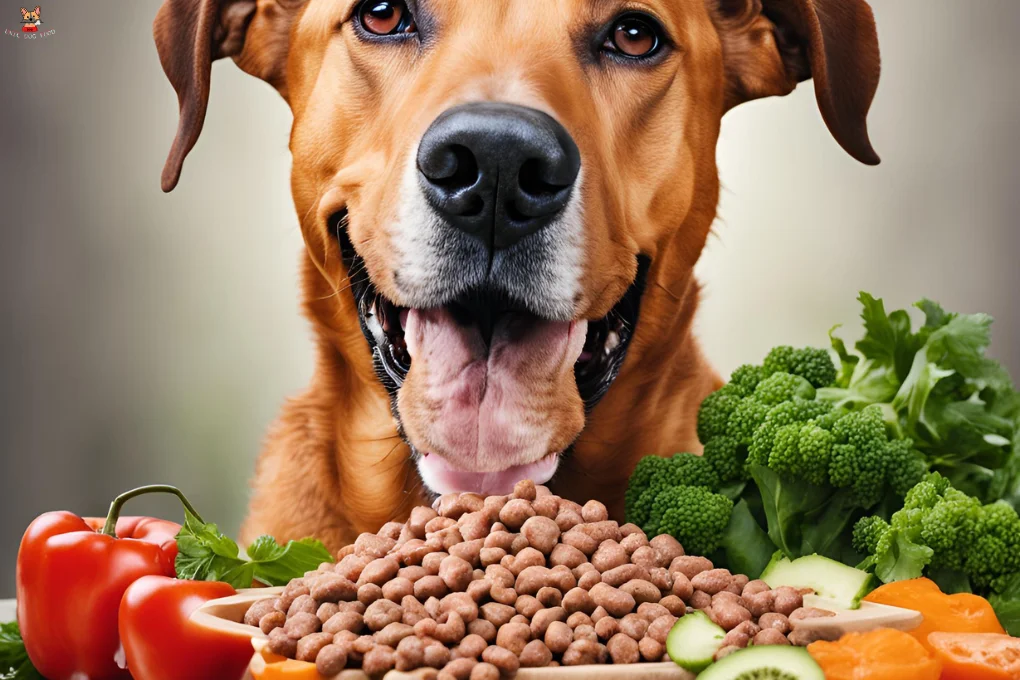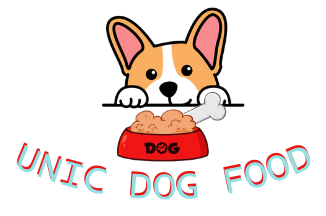Hey there, fellow dog lovers! I’m Koushik, your go-to pet food blogger and recipe creator at UnicDogFood.com.
Let me start by sharing a little story with you. A few months ago, my golden retriever Max started showing signs of low energy. His coat wasn’t as shiny, and he just didn’t seem like his usual happy self.
After consulting with our vet, I learned that his kibble might not be providing him with all the nutrients he needed.
That’s when I decided to dive into making nutritionally complete homemade dog food recipes —and wow, what a difference it made!
Max now has more energy, his coat gleams like gold, and he’s back to being the playful pup I adore.
If you’re here because you want to give your furry friend the best nutrition possible without spending hours in the kitchen, you’re in the right place.
Today, I’m sharing one of my favorite recipes that are simple, packed with flavor, and vet-approved
What Are The Benefits Of Homemade Dog Food?
Switching to homemade dog food has several advantages that go beyond just feeding your pup. Here’s why so many pet parents are making the switch:
1. Control Over Ingredients:
You know exactly what goes into your dog’s bowl—no mystery fillers, artificial preservatives, or low-quality by-products.
2. Tailored Nutrition:
Homemade meals can be customized to meet your dog’s specific needs, whether they’re a senior, a puppy, or have allergies.
3. Improved Health and Energy Levels:
Many pet parents report shinier coats, better digestion, and increased energy after switching to homemade food.
4. Strengthened Bond:
Preparing meals for your dog shows love and care. Plus, watching them enjoy something you made is incredibly rewarding.
Nutritionally Complete Homemade Dog Food Recipes

Recipe Overview
This nutritionally complete homemade dog food recipe is designed to provide balanced nutrition for your dog. It’s easy to make, requires no fancy equipment, and uses ingredients you probably already have at home.
- Prep Time: 15 minutes
- Cook Time: 30 minutes
- Total Time: 45 minutes
- Cuisine: Pet-Friendly
- Course: Main Course
- Difficulty Level: Beginner
- Yield: 4 servings (adjustable)
- Calories Per Serving: Approximately 350 kcal
Ingredients
Here’s what you’ll need to whip up this delicious meal:
- Protein Source: 1 lb ground chicken or turkey (lean and boneless)
- Carbohydrates: 1 cup cooked brown rice or sweet potatoes
- Vegetables: 1 cup finely chopped carrots, green beans, or spinach
- Healthy Fats: 1 tablespoon olive oil or fish oil
- Calcium Boost: 1 teaspoon ground eggshell powder or calcium supplement (vet-approved)
- Optional Add-Ins: A sprinkle of turmeric or parsley for extra health benefits
Equipment Needed
You don’t need anything fancy for this recipe. Just grab:
- A large pot or skillet
- A cutting board and knife
- A measuring cup and spoons
Instructions
Let’s get cooking! Follow these steps to create a meal your dog will wag their tail for:
1. Prepare the Protein:
Heat a skillet over medium heat and add the ground chicken or turkey. Cook until fully browned, breaking it into small pieces as it cooks. Drain any excess fat if needed.
2. Cook the Carbs:
While the protein is cooking, prepare your carbohydrate source. If using sweet potatoes, peel and chop them into small cubes, then boil until soft. For brown rice, follow package instructions.
3. Chop the Veggies:
Finely chop your chosen vegetables. Dogs don’t chew like we do, so smaller pieces are easier for them to digest.
4. Combine Everything:
In a large bowl, mix the cooked protein, carbs, and veggies. Stir in the olive oil or fish oil for healthy fats.
5. Add Calcium:
Sprinkle in the ground eggshell powder or calcium supplement. This step is crucial for ensuring your dog gets enough Calcium for strong bones and teeth.
6. Cool and Serve:
Let the mixture cool completely before serving. You can store leftovers in an airtight container in the fridge for up to 3 days.
Tips and Variations
❖ Substitutions: Swap chicken for beef, lamb, or even salmon. Use quinoa instead of brown rice if your dog prefers grains.
❖ Storage Tips: Portion out individual servings and freeze them for up to 3 months. Thaw overnight in the fridge before serving.
❖ For Small Dogs: Reduce portion sizes to avoid overfeeding. Always consult your vet for specific dietary needs.
Expert Tips & Troubleshooting
✔ Why Calcium Matters: Many homemade dog food recipes lack Calcium, which can lead to weak bones. Always include a vet-approved calcium source.
✔ Avoid These Ingredients: Never use garlic, onions, grapes, raisins, chocolate, or artificial sweeteners—they’re toxic to dogs.
✔ Portion Control: Overfeeding can lead to weight gain. Stick to recommended serving sizes based on your dog’s size and activity level.
Serving Suggestions
Serve this dish warm or at room temperature. Pair it with fresh water and maybe a small treat for dessert. Watch your pup gobble it up happily!
How to Make Nutritionally Complete Dog Food?
Creating nutritionally complete homemade dog food recipes doesn’t have to be intimidating. The key is ensuring that every meal provides a balance of essential nutrients: protein, carbohydrates, fats, vitamins, and minerals.
Here’s how you can do it:
1. Start with High-Quality Protein:
Dogs thrive on animal-based proteins like chicken, turkey, beef, or fish. These should make up about 40-50% of their diet. Avoid fatty cuts and always cook thoroughly to prevent foodborne illnesses.
2. Add Complex Carbs:
Carbohydrates give your dog energy and fiber for digestion. Brown rice, sweet potatoes, and quinoa are excellent choices. They should make up around 30-40% of the meal.
3. Incorporate Veggies for Vitamins:
Vegetables like carrots, green beans, spinach, and pumpkin are rich in vitamins and antioxidants. Chop them finely or lightly steam them to make them easier to digest. Aim for 10-15% of the meal.
4. Don’t Forget Healthy Fats:
Fats support skin health, coat shine, and brain function. Add a tablespoon of olive oil, fish oil, or flaxseed oil to each batch of food.
5. Supplement for Calcium and Minerals:
Since homemade meals often lack Calcium, include a vet-approved supplement like ground eggshell powder or a commercial calcium product. This ensures strong bones and teeth.
6. Consult a Vet or Veterinary Nutritionist:
Every dog is different. A vet can help tailor the recipe to your pup’s age, size, breed, and any specific health concerns.
5 Interesting Trends Related to Nutritionally Complete Homemade Dog Food Recipes
The world of pet nutrition is evolving, and here are five trends that are shaping how we feed our furry friends:
1. Functional Ingredients:
Pet parents are adding superfoods like turmeric, blueberries, and pumpkin to boost immunity and overall health. These ingredients are packed with antioxidants and anti-inflammatory properties.
2. Grain-Free Diets:
Many dogs benefit from grain-free diets, especially those with sensitivities to wheat or gluten. Sweet potatoes, lentils, and chickpeas are popular alternatives.
3. Customized Nutrition Plans:
Just like humans, dogs have unique dietary needs. More pet owners are working with veterinary nutritionists to create personalized meal plans.
4. Sustainable and Ethical Choices:
Eco-conscious pet parents are opting for locally sourced, organic, and sustainably farmed ingredients to reduce their carbon pawprint.
5. Crockpot and Batch Cooking:
Busy pet parents love using slow cookers to prepare large batches of veterinarian-approved homemade dog food recipes. It’s convenient, saves time, and ensures consistency.
Complete Nutrition From A Veterinarian
When it comes to veterinarian-recommended homemade dog food, balance is Everything. Here’s what vets emphasize when guiding pet parents:
◆ Protein-to-Carb Ratio: Most adult dogs need a diet that’s higher in protein than carbs. Puppies and active breeds may require even more protein.
◆ Essential Nutrients: Dogs need omega-3 fatty acids (from fish oil), Calcium (from supplements), and taurine (found in meat). Missing these can lead to serious health issues.
◆ Portion Sizes: Overfeeding is a common mistake. Use a calorie calculator based on your dog’s weight and activity level to determine serving sizes.
◆ Avoid Toxic Foods: Some human foods, like onions, garlic, grapes, and chocolate, are toxic to dogs. Always double-check before adding new ingredients.
What Nutrition Guidelines Should You Follow?
To ensure your homemade dog food is safe and nutritious, follow these guidelines:
➣ Balance Macronutrients: Aim for 40-50% protein, 30-40% carbs, and 10-20% fats. Adjust based on your dog’s life stage and activity level.
➣ Include Variety: Rotate proteins (chicken, beef, fish) and vegetables (carrots, spinach, green beans) to provide a wide range of nutrients.
➣ Monitor Portion Sizes: Feeding too much can lead to obesity, while too little can cause malnutrition. Stick to vet-recommended portions.
➣ Supplement Wisely: Always use vet-approved supplements to avoid overloading your dog with specific nutrients.
➣ Transition Gradually: If switching from kibble to homemade food, do it slowly over 7-10 days to avoid digestive upset.
FAQs
Is Homemade Dog Food Better Than Store-Bought?
It depends! Homemade dog food allows you to control the ingredients, but it must be nutritionally balanced. Always consult a vet or veterinary nutritionist to ensure your recipe meets your dog’s needs.
Can I Feed My Dog This Recipe Every Day?
Yes, as long as it’s nutritionally complete and vet-approved. Rotate proteins and veggies occasionally to keep things interesting.
What If My Dog Has Allergies?
Consult your vet to identify allergens. Common substitutions include swapping chicken for lamb or removing certain veggies.
How Do I Know If My Dog Likes It?
Dogs are pretty honest about food! If they devour it quickly and show excitement during mealtime, you’ve got a winner.
Conclusion
There you have it—a simple, tasty, and nutritionally complete homemade dog food recipe that’s perfect for your furry best friend.
I hope you and your pup enjoy this dish as much as Max and I do. Don’t forget to share your experience in the comments below or tag me on social media—I’d love to see your creations!
Nutritionally Complete Homemade Dog Food Recipes
Equipment
- A large pot or skillet
- A cutting board and knife
- A measuring cup and spoons
Ingredients
- 1 lb ground chicken or turkey lean and boneless
- 1 cup cooked brown rice or sweet potatoes
- 1 cup finely chopped carrots green beans, or spinach
- 1 tablespoon olive oil or fish oil
- 1 teaspoon ground eggshell powder or calcium supplement vet-approved
- A sprinkle of turmeric or parsley for extra health benefits
Instructions
Prepare the Protein:
- Heat a skillet over medium heat and add the ground chicken or turkey. Cook until fully browned, breaking it into small pieces as it cooks. Drain any excess fat if needed.
Cook the Carbs:
- While the protein is cooking, prepare your carbohydrate source. If using sweet potatoes, peel and chop them into small cubes, then boil until soft. For brown rice, follow package instructions.
Chop the Veggies:
- Finely chop your chosen vegetables. Dogs don’t chew like we do, so smaller pieces are easier for them to digest.
Combine Everything:
- In a large bowl, mix the cooked protein, carbs, and veggies. Stir in the olive oil or fish oil for healthy fats.
Add Calcium:
- Sprinkle in the ground eggshell powder or calcium supplement. This step is crucial for ensuring your dog gets enough Calcium for strong bones and teeth.
Cool and Serve:
- Let the mixture cool completely before serving. You can store leftovers in an airtight container in the fridge for up to 3 days.
- Homemade Bone Broth For Dog Recipe - December 17, 2025
- Can You Cook Raw Dog Food? - September 10, 2025
- Homemade No-Bake Dog Treat Recipes Your Pup Will Love - September 6, 2025

